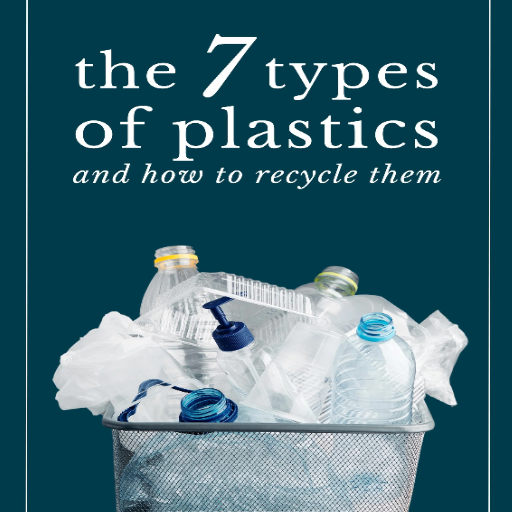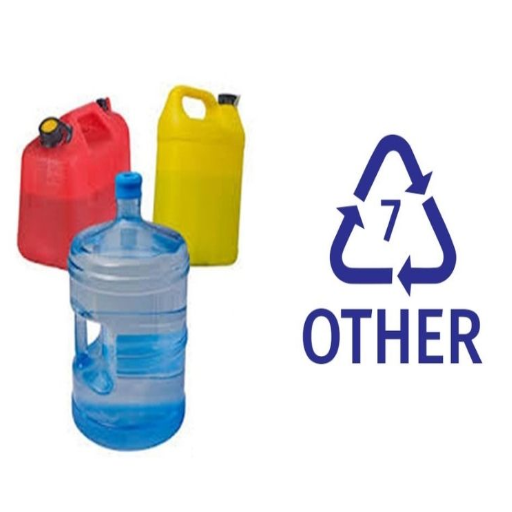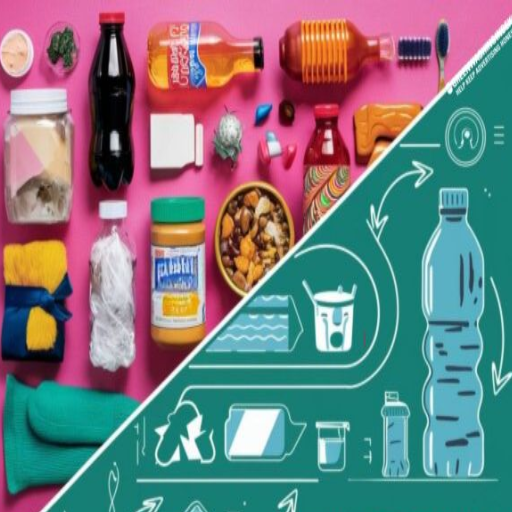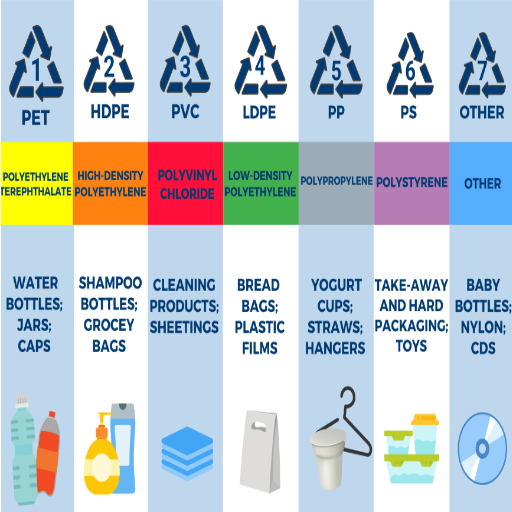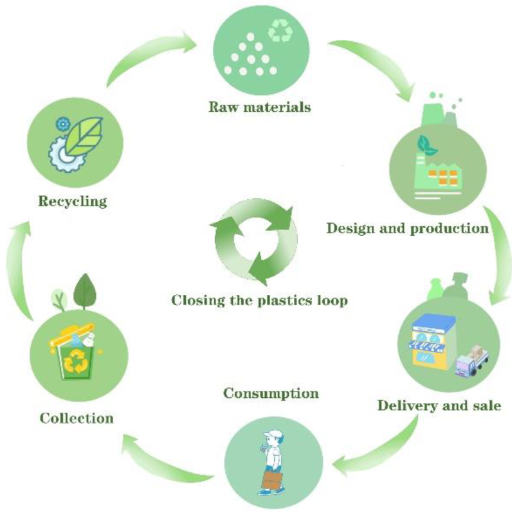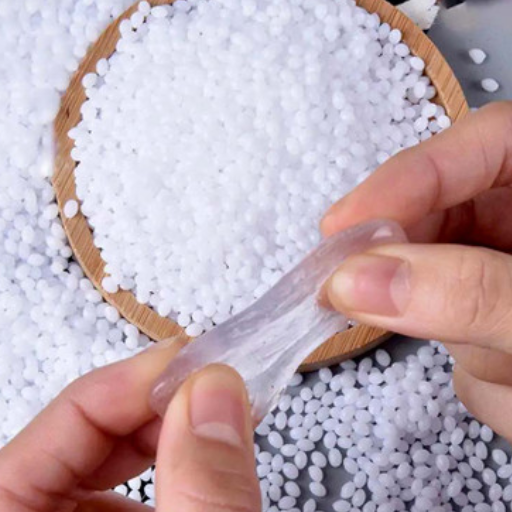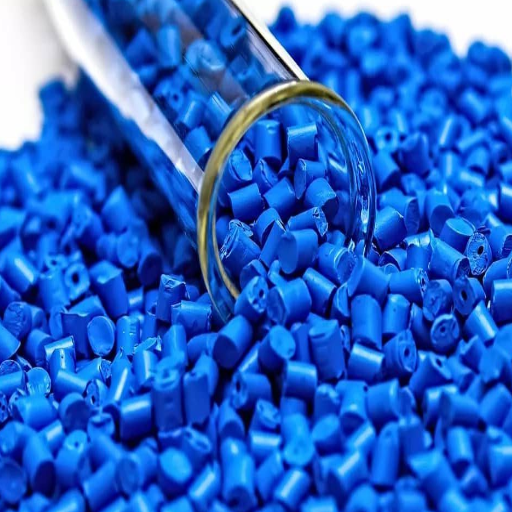Plastic plays an integral role in our daily lives, but not all plastics are created the same. Recycling types 1-7 are the way to go. Type 7 often evokes thoughts of complexity and diversity among the plastic classes. Reusable water bottles and specific food containers are just some of the items that plastic Type 7 covers, and many different types of plastics do not fit into any of the other six recycling codes. So, what exactly is a Type 7 plastic, and is it essential for sustainability and recycling efforts? This guide will break down the basics to provide you with a clear understanding of what Type 7 plastics consist of, their threats to the environment, and the responsible use and disposal of these plastics. This article will serve as your ultimate guide on making more sustainable choices or merely decoding the phantom numbers behind plastic.
What is Type 7 Plastic and How is it Different from Other Plastic Types?
Exploring the Definition and Composition of Type 7 Plastic
The type 7 plastic represents a gamut of materials falling outside the range of Types 1 through 6, upon applying the resin identification system. It generally includes polycarbonate (PC), polylactic acid (PLA), and other mixed or specialty plastics. Polycarbonate is typically classified among the Type 7 plastics. It is cherished for its strength, clarity, and heat resistance and lends itself to producing reusable water bottles, CDs, and safety goggles. Conversely, PLA is another Type 7 plastic fully biodegradable and made from renewable sources such as cornstarch- the more environmentally friendly option for packaging and disposable dishware.
The flexibility of Type 7 plastics stems from their varied chemical compositions that allow these plastics to cater to varied requirements, both functionally and aesthetically. Polycarbonate, for instance, has an impact strength of about 850 to 1,480 psi, which allows for applications in areas where toughness is urgent; though, from the environmental point of view, this plastic is questionable. Some Type 7 plastics, like PLA, are designed to break down under industrial composting conditions, whereas other Type 7 plastics, including polycarbonate, release substances into the environment over time, allegedly, bisphenol A (BPA), which are precursors of concern for human health and environmental contamination. This variation in functionalities propounds the need to know precisely which Type 7 plastic is employed and ensure its appropriate recycling or disposal to relieve ecological hazards.
How Does Type 7 Plastic Compare with Other Plastics?
Thought by some as a seventh plastic, Type 7 plastics are in a class of their own owing to different compositions and unique applications. Types 1 through 6 are always defined by their polymer, like PET, HDPE, or PVC. Type 7, on the other hand, serves as a catch-all for plastics that do not fit in the Types 1 to 6 categories. Materials in this sixth category can range from polycarbonates (PC) to bioplastics or multi-polymer blends. So, in terms of properties, it is truly a mixed bag.
PET (Type 1) and HDPE (Type 2) are famed for their ability to be recycled and, as such, have a consistent use in everyday consumer products such as water bottles and detergent containers for recycling systems’ sake. These plastics, therefore, do have well-known recycling systems. However, Type 7 plastics differ, as they cannot be universally recycled due to their lack of standardized chemical structure. This presents a definite challenge regarding waste management, given that these plastics could not enter recycling facilities unless their exact composition is first identified.
Another fundamental difference lies in the health and environmental impacts of plastics in varying degrees. Most of them are considered less harmful in regular use compared to some Type 7s that may leach hazardous substances; examples are polycarbonate plastics that release BPA into the environment. So, compared to single-polymer plastics from Types 1 to 6, some in Type 7 are considered safe, while others are not definite.
Further, regarding innovation, materials science has allowed more environmentally friendly options in Type 7, such as the PLA bioplastics, which are compostable under industrial conditions, but only if these conditions are met. Thus, the environmental benefit is compromised if that infrastructure is not already implemented. By comparison, conventional plastics, generally more Type 2 and Type 5 (PP), tend to be more durable and easily recyclable, with much less doubt about their sustainability compared to Type 7.
This represents a unique feature, which makes it critical that Type 7 plastics undergo scrutiny on a case-by-case basis, as opposed to conventional plastics known more for their standardized properties. Understanding differences will not only help guide choices toward responsible consumption but also point out the loopholes in recycling and disposal systems that need improvement.
Common Uses and Applications of Number 7 Plastics
The Number 7 category encompasses myriad polymers, each with novel applications. Among the most popular uses of these plastics is the production of reusable water bottles, the plastic being Type 7, especially polycarbonate, which is light, durable, and very impact-resistant. The classification also includes some biodegradable plastics, such as polylactic acid (PLA), which are used for compostable food containers and packaging, providing a green alternative under certain circumstances.
Another application is electronics, where heat-resistant and electrically insulating Type 7 plastics are employed to make housings for components, CDs and DVDs, and circuit boards. They are also utilized in automotive and building applications, where strength and versatility allow for producing durable panels, adhesives, and coatings.
These practical uses rarely allow effective recycling of Number 7 plastics, pushing them farther away from sustainable practices. Once the applications are known from the general point of view, both consumers and industries can take a well-informed stance regarding the use of plastics and their lifecycle.
Can Type 7 Plastic Be Recycled?
Understanding the Recycling Code and Its Implications
The Number 7 plastics, created with the “Other” recycling code, include an entire lexicon of polymer names such as polycarbonate, nylon, and acrylic. Their varied nature makes their recyclability quite a differentiated matter depending on the local recycling program and available technology. Some advanced facilities could accept a few Type 7 plastics, while most cannot be recycled and end up in landfills due to the complicated separation and processing. The category also includes bioplastics such as PLA, which are often mislabeled as “compostable,” since these plastics can only be broken down in an industrial composting facility.
Type 7 plastics speak for themselves when it comes to the environment. A recent study found that improper disposal of such materials results in long-lasting pollution, as many contain additives or chemical bonds to prevent them from degrading. It is necessary to promote sustainable solutions that lean toward designing materials with recyclability in mind or choosing a greener alternative to minimize the lethal impact.
Challenges in the Plastic Recycling of Type 7 Materials
Given their variety in compositions, Type 7 plastics and “other” plastics have a serious recycling problem. Such substances cover the gamut of polymer types from polycarbonate to nylon to bioplastics; each would require a distinct treatment. Due to a lack of standardization at most recycling centers, these plastics are usually not accepted into regular recycling routes, increasing the likelihood of these being fed into landfills or incinerators.
A further complication is the existence of toxic additives such as BPA, which is very often used in some Type-7 plastics. These additives can leach into the herbal ecosystem, thus contaminating the earth and water supplies. To go deeper, considering that, according to the Ellen MacArthur Foundation, only 9% of all plastic waste ever produced has been recycled globally, it lends itself to a broad infrastructural challenge with plastics, including Type 7.
Advanced chemical recycling, considered a promising innovative approach, is trying to find universal sorting technologies to address these concerns. These solutions require multi-stakeholder effort from governments, industries, and consumers alike. Collaborative policy endeavors, investment in recycling infrastructure, and consumer awareness still present a way through the problems associated with recycling Type 7 plastics.
What Recycling Facilities Accept Number 7 Plastics?
With recourse, we examine the most pertinent question: Are Number 7 plastics recyclable? Number 7 plastics, also sometimes known as “other” because they do not fall into any of the six main categories of plastic, comprise a variety of plastic polymers. This classification is complicated, as many different types of plastics comprise the composite culprits and present recycling difficulties.
In some areas, collection programs may include drop-off points or work with private recycling operators specializing in hard-to-recycle plastics. Consumers are advised to check with local recycling centers or environmental organizations to see whether they accept Number 7 plastics. In addition to identifying resin identification codes on products, placing them alongside good sorting practices can help ensure these plastics are managed correctly. One of the principal challenges confronting any efforts in this direction is the expansion of accepted places for processing this particular kind of plastic.
What Products are Made from Type 7 Plastic?
Analyzing the Use of Type 7 Plastic in Food Containers and Packaging
Classified as Type 7 plastics under the resin identification code label- “Other,” these are a mixed bag of polymer types. The most common example would be polycarbonate, one of the most widely used varieties in reusable water bottles, food storage containers, and packaging. The main functional features of a polycarbonate product are weight, durability, and resistance to heat, making it the best candidate for protecting food against external contaminants while also resisting heat or cold during the contaminating process. Visibility of the packaging is another excellent factor; the transparent film makes the food visible.
The Type 7 plastics bring forth issues, mainly consumers’ health concerns, with Type 7 plastics containing BPA. Studies suggest that BPA chemicals found in some polycarbonate materials leach into the food or beverage substance, especially when exposed to high temperatures or stored for an extended period; thus, manufacturers are increasingly shifting to BPA-free alternatives that employ bioplastics or safer polymer options. Regulatory agencies such as the U.S. Food and Drug Administration (FDA) have laid down strict regulations on the use of BPA in food-related products, thereby trying to avert any suspected health risks.
In packing goods, Type 7 plastics could also be part of the multi-layer materials to increase shelf life. Though these composite structures do a good job of maintaining freshness, the multilayer ones are a headache to recycle. The environmental consequences of such materials drive the development of greener packaging concepts, including the development of biodegradable and compostable counterparts in the food sector. Addressing the safety and sustainability issues has allowed industries and researchers to work toward achieving some sort of compromise between viability, consumer health, and environmental responsibility regarding Type 7 plastics.
Role of Number 7 Plastics in the Plastics Industry
Number 7 plastics are categorized as “others,” comprising many polymers that do not fit into the first six types of plastic resin codes. This group includes materials like polycarbonate (PC), polylactic acid (PLA), nylon, and composite plastics that combine more than one resin type. Such materials provide a unique solution to various applications across industries and require special properties, such as being highly impact-resistant or heat-resistant.
For instance, polycarbonate is used to make shatterproof windows, optical lenses, and electronics, depending on the applications needing high-grade durability and clarity; polylactic acid, a simple plastic made from renewable raw materials such as corn starch or sugarcane, has been placed at center-stage in sustainable packaging and disposables as the industry gears towards environmental options. Composite plastics also offer additional performance in manufacturing automotive parts and multilayer food packaging.
Yet the inherent versatility of Number 7 plastics poses challenges, particularly regarding recycling. These plastics’ composition tends to hamper easy recycling at most conventional centers, worsening environmental issues. Industry data state that less than 10% of Number 7 plastics are recycled reasonably, emphasizing the need for improved waste disposal frameworks alongside innovative recycling technologies to handle these complex formations. Addressing these concerns will allow the plastics industry to manage the Number 7 plastics more effectively while lessening their greater environmental impact.
Environmental Impact of Disposable Items Made from Type 7 Plastic
Considered complex and challenging to recycle, disposable items produced from Type 7 plastics contribute to environmental degradation. These plastics are usually a mixture of many resins or a layered material, e.g., polycarbonate layered with PLA, creating a significant obstacle for standard recycling plants. The complexity often results in these articles being incinerated or dumped into landfills, adversely affecting the environment.
If incinerated, the Type 7 plastics release chemicals into the environment, such as BPA (bisphenol-A), or generate greenhouse gases, worsening air pollution and global warming. In a landfill, however, these plastics may take hundreds of years to decompose, during which they may leach toxic substances into the soil and groundwater, thereby threatening the ecosystems and public health. If there is an example worth mentioning, then single-use coffee pods, an everyday Type 7 plastic item, produce millions of tons of garbage each year. Increasingly aware consumers are often at odds with a design concept that favors convenience over recyclability.
Recent breakthroughs in biodegradable alternatives and better waste infrastructure are growing rays of hope. For example, some Type 7 PLA-based plastics can break down in industrial composting conditions. The problem is that facilities of this sort are barely available worldwide. Therefore, solving environmental problems requires regulatory measures, materials science innovation, and increased consumer engagement toward sustainable practices.
How to Identify Type 7 Plastic?
Deciphering the Plastic Numbers Guide and the Recycling Symbol
The plastic recycling guide, represented by the triangular recycling symbol and a number from 1 to 7, serves the vital purpose of defining the composition and recyclability of plastics. Plastics of Type 7, indicated by the number 7 inside the triangle, represent “Other” plastics, which include various materials not considered in Types 1 through 6. These could be polycarbonate (PC), acrylonitrile butadiene styrene (ABS), bioplastics like PLA, or other mixed resins.
Plastics usually labeled Type 1 and 2 (PET and HDPE) are generally accepted in recycling programs; however, Type 7 plastics tend to impose more difficulties in processing. This is because the materials can often be mixed together, and the infrastructure to recycle them in some regions may be lacking. For example, many Type 7 materials cannot be recycled in standard curbside programs and need special treatment.
A good grasp of these classifications aids an informed consumer in making the right choices when discarding plastic goods. When consumers look for the recycling symbol and the number supported by it, they can aim for their product to be recycled or sent to the right disposal site, ultimately making waste management somewhat easier.
Recognizing the Number Inside the Recycling Triangle
The number inside the recycling triangle is known as the resin identification code (RIC) and serves to classify plastics by their chemical composition. Those codes range from 1 to 7 and signify whether a particular plastic type can be recycled. For example, 1 (PET or PETE-Polyethylene Terephthalate) is common in water bottles and soda containers and is considered acceptable at most recycling centers. 2 (HDPE-High-Density Polyethylene), on the other hand, is used mainly in milk jugs and detergent bottles, is sturdy, and is generally recyclable, too.
From here, 3 through 7 may be complicated to recycle. 3 (PVC-Polyvinyl Chloride), while in plumbing applications, is rarely recycled because of its composition, whereas 4 (LDPE-Low-Density Polyethylene) found in grocery bags may need to go through drop-off recycling programs. 5 (PP-Polypropylene) for yogurt containers and 6 (PS-Polystyrene), such as foam cups, remain challenges, with very few facilities accepting. On the other hand, 7 (Other) covers poles like polycarbonate, which could vary by recycling.
Knowing these numbers helps educate consumers about the appropriate materials to be sorted and used in accordance with recycling guidelines in their respective areas, minimize contamination, and create effective recycling systems. If one can learn and understand these classifications, one can make beneficial choices leading to sustainable waste management practices.
Examples of Everyday Items with the Number 7 Plastic Code
Most number 7 plastics by category are made from polycarbonates, bioplastics, or other mixed types. Some of the more common examples are reusable water bottles, baby bottles, CDs, safety goggles, some medical storage containers, and certain food packaging. Because of their strength and resistance to heat, number 7 plastics are often chosen for making automotive parts, electronic components, and some kitchen utensils.
However, it is essential to highlight that not all number 7 plastics are recyclable, and the available options usually depend on a particular recycling yard. For example, bioplastics, a category within number 7 plastics and claimed to be ‘green alternatives,’ often require industrial composting plants to break down adequately. Hence, to get the most out of the environmental benefits, consumers must first check their local processing options and think through reuse options.
The Future of Type 7 Plastic in Recycling Programs
Innovations in Recycling Facilities and Technology
Therefore, innovations in recycling facilities and technology are probably the greatest hope for truly managing these plastics in the future. For instance, among the problems with these plastics is that they are highly varied in composition, including polycarbonate or bioplastics. Such materials may be better distinguished and processed with artificial intelligence and machine-learning-based systems for sorting. Recycling plants can reduce operating costs by automating the sorting process and diverting more Type 7 plastics from landfills.
I consider chemical recycling technologies to be an essential breakthrough toward solving the problems of Type 7 plastics. Mechanical or physical recycling faces obstacles when dealing with mixed plastics or plastics subjected to degradation. Chemical recycling, however, involves materials being broken down to their molecular level, thereby recovering raw materials that can be reused to make new products and close the loop. Scaling up these technologies and incorporating them into existing recycling programs can significantly improve the recyclability of Type 7 plastics and mitigate their environmental consequences.
Finally, public-private partnerships can be a strong driver for progress. Governments can stimulate innovation with funding and policy support, while businesses can fund research and development to design more sustainable materials and products. In tandem, these efforts could help change how we deal with not only Type 7 plastics but all complex waste streams, ushering in a future where waste management is more sustainable and efficient.
Potential for Curbside Recycling Programs to Include Type 7
In my opinion, curbside recycling is the avenue through which the Type 7 plastics recycling enters the mainstream, dependent greatly on its technological evolution and public participation. A significant issue is that Type 7 plastics are a mixture of various materials and are not easy to process with standard recycling technology. However, with further advancements in sorting methods and chemical recycling, the possibilities to address these challenges become real. Additional investment in infrastructure, in terms of better sorting facilities and recycling centers, would allow for more efficient handling of these plastics.
On the other hand, the public’s participation in awareness is another pivot in expanding the scope of curbside recycling to accept Type 7 materials. Localities will need to instruct their residents on identifying and properly disposing of these plastics, so the collected product finds use further down the recycling chain. Partnerships among local governments, private recycling companies, and community advocacy groups could support this transition. I feel that through a mix of proper education, advanced technology, and inter-agency cooperation, curbside programs would one day encompass the toughest waste streams, such as Type 7, thereby effectively reducing reliance on landfills and encouraging more sustainable alternative waste disposal routes.
These programs serve as a model of sustainability. Intended for large-scale community involvement, they will take a lot of time and effort to change; however, the long-term benefits of less landfill space with more recyclables and environmental awareness are worth the pursuit. The potential is there, but it will take everybody working hard to ensure it happens.
Policy Changes and Their Impact on Plastic Recycling
A policy concerning plastic recycling does have significant effects on environmental outcomes and a community’s way of living. To be effective, plastic recycling policies must be implemented appropriately and have sufficient public participation. For example, enforcing stricter regulations on the types of plastics that can be produced and sold can limit the generation of non-recyclable waste. However, with more stringent standards on non-recyclable plastics in production, manufacturers must change their production methods in return. From my very perspective, to build a more sustainable future, changes in policies have to be carried out, giving materials scientists room to work towards this goal and encouraging the use of recycled content in products.
Secondly, I consider public education paramount to ensure the utmost success of such policies. This is because often the working of recycling systems is kept a secret from those who ought to know how to dispose of their waste accurately, thus causing contamination rates and efficiency to decrease. Therefore, investing in awareness campaigns is necessary, coupled with providing the local community with clear instructions about their local recycling policy so that individuals comply more willingly. Finally, the success of these policy changes ultimately rests on all of us- whether governments, corporations, or individual citizens- working together to embrace change.
Reference Sources
- Plastics Recycling By the Numbers—Miller Recycling: This article explains the classification of plastics, including Type 7, and its characteristics.
- Plastic #7 (Other)—San Jose Recycles: This site details Type 7 plastics, including biodegradable and compostable options.
- 7 Types of Plastic That Are Most Common – Plastic Oceans: Overview of common plastic types, including insights into Type 7.
- Grappling with the Infamous #7 PLA Recycling Code – McGill Compost: Focuses on PLA within Type 7 plastics and its compostability.
- The Environmental Toll of Plastics—AC Plastics: This article discusses the environmental impact of plastics, including concerns related to Type 7.
Frequently Asked Questions (FAQs)
Q: What is a Type 7 plastic, and how does it differ from other plastics?
A: Type 7 plastic is for miscellaneous plastics that include materials that do not fit into the other six types. Varied polymers such as polycarbonate and polylactic acid may be present. Unlike other plastic types, such as PET (1 plastic) or HDPE (2 plastic), Type 7 may or may not be recyclable depending on its resin.
Q: What are some of the typical uses of Type 7 plastic?
A: Type 7 plastic has several uses: baby bottles, water cooler bottles, sunglasses, DVDs, and food containers. It is a general-purpose product for items that need a hard-wearing, particular material.
Q: Is Type 7 plastic recyclable, and how can I identify it?
A: Not all Type 7 plastics are recyclable. It depends on the polymer used. Check for recycling code 7 in a triangle on the product. Check with your local recycling program, since such programs may or may not accept these materials.
Q: How does Type 7 plastic compare to polystyrene (6 plastic) regarding recyclability?
A: Although Type 7 and polystyrene (6 plastics) are generally considered tough to recycle, polystyrene is usually less accepted because of the chemicals they tend to leach and their complex processing. Type 7 could be a bit more recyclable when it contains some bioplastics.
Q: Is Type 7 plastic safe to use in contact with food?
A: Some Type 7 plastics do make their way into food packaging, such as food storage containers, but caution must be exercised as some materials could leach chemicals. Always check the product’s labeling.
Q: What should I do when Type 7 plastic products end their life?
A: If they are recyclable according to local recycling guidelines, you should simply toss them in your recycling bin. If not, try to find other ways to use or dispose of them responsibly for a negligible environmental effect.
Q: How does Type 7 plastic mix with other types, such as HDPE and LDPE?
A: Type 7 plastic is distinct from HDPE (2 plastic) and LDPE (4 plastic), which are more widely recycled. HDPE is used for things like milk jugs and detergent bottles, and LDPE for grocery bags; Type 7 plastics stand for a larger variety of polymers, making interactions with recycling systems more complex.
Q: What are the environmental concerns about Type 7 plastic?
A: The primary concern is that it may leach chemicals if poorly managed. Also, recyclability is highly variable. Its use of many materials can complicate recycling, leading to more landfills if they are not handled correctly.
Q: How can I distinguish between recyclable and non-recyclable Type 7 plastics?
A: Look for recycling information on the product or packaging. Some bioplastics under Type 7 are more likely to be recycled than others. Always seek guidance from your local recycling center.


